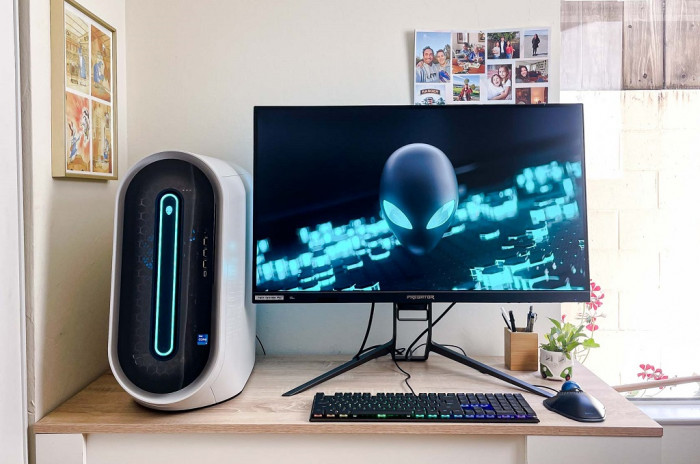Long before computers came to Indonesia, western countries were already familiar with them. Initially computers were used as calculating tools or for things related to arithmetic. In the beginning, computers were not as sophisticated as they are now. Are you quite curious about the early history of computer technology? Below we will summarize the history of computers and their development, divided into 5 generations. Here is the information for you.
Understanding Computers
The name computer comes from the Latin word computare, which means calculating tool. Why is that? Because initially this computer was created as a device that processes and calculates numbers. Quoted from the definition of computer according to one expert, namely Donald H. Sanders, a computer is defined as an electronic system for manipulating data quickly and precisely which automatically receives, stores and processes input data which will then produce output under the supervision of an operating system stored in it. storage. Or if defined in other words, a computer is electronic equipment consisting of several components, namely a monitor, CPU, keyboard, mouse and printer, all of which work together to produce information according to existing data and programs.
Inventor of the First Computer
Before moving on to the history of computer development, you also have to know who invented the first computer. He was Charles Babbage, a mathematical scientist from England. At first he encountered several problems in calculating using mathematical tables. This made him innovate to create a tool that could minimize errors in the calculation process. In the end he succeeded in creating a calculating machine called the first Difference Engine. In its time, this machine was the forerunner to the creation of computers.
5 Generations of Computers
The development of computers is divided into 5 generations starting in 1941. Complete information will be summarized in the article below.
First Generation (1941-1959)
In World War II, computers began to be developed by the countries involved for war needs. Germany was a pioneer country that was influential in the development of computers. Through one of its engineers named Conrad Zuse, in 1941 Germany succeeded in creating a computer called the Z3 which functioned to design airplanes and guided missiles. Not wanting to be outdone by its rivals, Britain’s allies in 1943 also succeeded in creating a computer specifically designed to be able to decipher the secret codes used by Germany. This computer was named Colossus.
Only later in 1946, an American scientist succeeded in creating a computer that could be used for all multipurpose purposes, which was named ENIAC (Electronic Numerical Integrator and Computer). This computer is a large computer and takes up a lot of space because it consists of 18 thousand vacuum tubes, 70 thousand resistors, 10 thousand capacitors, 75 thousand switches and 5 million soldering points which weigh up to 30 tons. This ENIAC computer is what is called the first generation computer.
Second Generation (1959-1965)
Computers in the 1960s were developed with transistors which had electrical power and were smaller in size. Machine language on computers also uses assembly language. These transistor computers began to be used in government institutions and universities for scientific purposes. The capabilities of this computer are also considered faster and can share information in real time. This second generation of computers is quite popular on the market even though the price is quite expensive. Furthermore, computers in the second generation were used in industry and health because they were reliable in printing data, calculating salaries and designing products.
Third Generation (1965-1971)
The second generation of computers that use transistors has made them smaller in size and more power efficient. Unfortunately, this computer produces a lot of heat when used, which risks damaging other parts of the computer. Until finally in 1958 a scientist from the United States named Jack Kilby succeeded in finding a solution to the transistor problem. Namely by utilizing an integration circuit (IC) combined with three electronic components in a small silicon disk made of quartz sand. Furthermore, scientists succeeded in making a breakthrough in a single chip whose contents represent many components, thereby making the size of the computer smaller. The advantage of this generation of computers is that they use an operating system that can run many different programs simultaneously. This third generation of computers includes the IBM 30, UNIVAC 9000, UNIVAC 1108 and GE 600.
Fourth Generation (1971-1980)
In the fourth generation, many companies successfully maneuvered by using a single chip that accommodates thousands of computer components using LSI (Large Scale Integration) technology. Next, this chip was transformed into VLSI or Very LSI, namely a chip containing hundreds of thousands of ICs which ultimately created a microcomputer. In 1970 the Intel company introduced 4 bit microcomputers. This fourth generation computer uses a chip containing 230 transistors that carry out 60 thousand operations in seconds. Then in 1972 the 8 bit microcomputer appeared which was also an Intel design. The characteristic of computers in the fourth generation is the use of green color and the use of Microsoft Basic for the programming language and CPM for the operating control system.
Fifth Generation (present and future)
Computers in the fifth generation have started to use PC standards. Companies that are considered experts in computer development are Intel and Microsoft. In fact, Microsoft has officially become the international standard for computer software and hardware. This fifth generation is also often called the Pentium generation because of its use as one of the microprocessors that is considered the most sophisticated. Computers in this generation also have millions of colors with very sharp resolution. Apart from that, at this time mobile computers such as laptops began to develop. Furthermore, currently the stages are still being carried out to realize future generation computers equipped with artificial intelligence. The goal is to create a computer device capable of communicating with humans, able to use visual input and learn from personal experience.
Computers which were originally shaped like large vacuum tubes have now turned into small devices that can even be carried anywhere. It cannot be denied that technology will make you continue to innovate.


